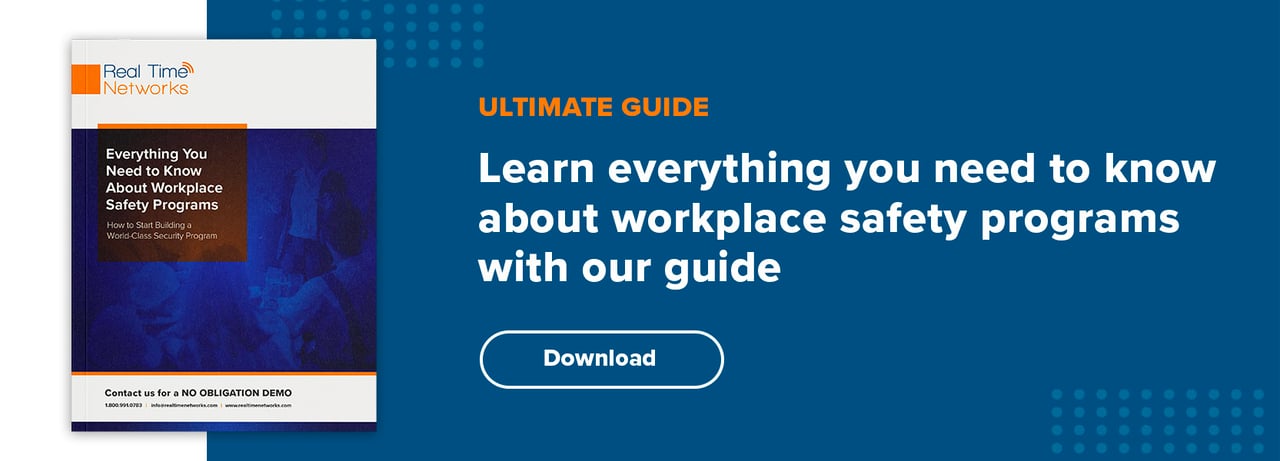By Jay Palter | June 18, 2021
Companies in every sector are looking for ways to respond faster to business challenges. Those could be operational, strategic, or security challenges—or, in reality, usually all three at once. From large enterprises down to small and medium-sized businesses (SMBs), many companies find success adopting a principle first developed in the military: situational awareness.
Situational awareness (SA) can improve how a company responds to all of those challenges. But what is it? Can an idea coming from the rigid environment of the military, one not driven by market forces, have a meaningful impact on a business?
This article will explain why situational awareness should matter to businesses, explore how Internet of Things (IoT) technology can improve SA, and discuss some of the IoT technologies your company should consider to increase situational awareness.
What is situational awareness?
Broadly, situational awareness is an individual’s or an organization’s understanding of their environment and all activities happening within that environment during a given time. For individuals, SA often means a perception of their immediate physical surroundings. For organizations, it can mean understanding their local market, suppliers, competitors, and other relevant business factors.
Security and management experts regard situational awareness to be a critical component of high-quality decision-making. They consider it very applicable to business activities where you need to protect the health and safety of your staff or the public as well as your property.
The value of situational awareness has been discussed in the U.S. and U.K. military under some name since World War 1. It has been applied in nonmilitary contexts, such as aviation, healthcare, and law enforcement, since the early 1980s. It is now recognized as an essential safety and security principle for all types of organizations.
The Three Phases of Situational Awareness
For businesses, situational awareness is best thought of as a continuous process broken down into three stages.
-
Perception
The first stage of SA involves perceiving the relevant components of your environment. That means identifying them, recognizing their current activity level, and recognizing what they’re interacting with. It also means filtering out irrelevant details so you’re not distracted.
The elements you want to perceive are entirely dependent on context. For example, a pilot flying in a storm will need to monitor airspeed, radar, air traffic control, their craft’s flight path, and many other elements. Those are very different elements from what a corporate security team might care about when conducting an evacuation drill.
SA perception should be an ongoing process. People or organizations must constantly monitor their surroundings for any changes that might inform the following two stages.
-
Comprehension
The next stage of situational awareness is comprehending the significance of all the elements you perceived in the first stage, both individually and as a whole. The mental or computational processes needed here include evaluation, analysis, interpretation, and pattern recognition.
-
Projection
The final stage of developing complete situational awareness is projection. After perceiving and comprehending your surroundings, you finally want to project the future status of each critical element. Projection supports better decision-making, which, in turn, supports better incident and strategic response efforts.
What is IoT, and how can it help increase your situational awareness?
The Internet of Things (IoT) is a growing global network of business and consumer equipment connected to the internet. IoT business devices carry a miniature, embedded computer; a wireless antenna; and often, onboard sensors capable of monitoring the device’s status and its environment. In a business setting, these devices are usually monitored and controlled through a central management system. Some standard IoT devices include networked home thermostats, business asset tracking systems, and smart security access control systems.
Benefits of IoT Technology to Improve SA
IoT technologies help you gather information in larger quantities and at a higher quality than is possible relying only on people. Using IoT tools offers a specific set of other benefits too:
Real-time monitoring
IoT devices are “location-aware,” meaning their sensors allow them to gather and relay information about their environment in real time back to central management systems. This type of real-time data gathering was previously only possible with enterprise-scale budgets. Now, IoT technology enables every SMB to increase its situational awareness to the same level.
Faster incident response
While an IoT system’s sensing and communicating capabilities greatly enhance the perception stage of SA, it’s the central management system that improves the latter two stages and your ability to respond. Many IoT management systems allow you to customize triggered actions that occur when a specific condition is met.
For example, suppose you’re using a real-time location monitoring system to track employee movement. In that case, the management system can automatically issue an alert to security personnel of an employee’s location should they stray into an unauthorized space. You don’t even need that space to have a doorway. You can configure virtual “geofence” boundaries in the location tracking system.
Reduced labor
Human error and slow, manual processes frequently undermine good situational awareness. IoT devices eliminate human error and significantly reduce intelligence-gathering times.
Higher-quality post-incident investigations
IoT devices improve your situational awareness, which, in turn, improves your response capability during emergencies. But the information gathered by IoT devices is also valuable after a crisis is over.
You won’t need to rely on human memory to understand what happened when. You’ll have detailed logs of employee and asset movements. IoT logs provide a much higher level of detail too. You won’t only understand how your organization performed in broad strokes, but you’ll also be able to precisely comprehend what happened to support even better situational awareness the next time an incident occurs.
What are some common concerns about using IoT systems?
IoT technology can be powerful and effective, but it isn’t flawless. Before purchasing any new system to increase your situational awareness, you should first understand the potential pitfalls that come with this new technology.
Standardization
IoT technology is still relatively new. Few industry and technical standards exist for its use, so many systems can’t easily integrate or communicate with each other. Existing industry best practices may also not yet account for IoT capabilities. It will take careful planning and design, best done with a trusted service provider, to overcome this challenge.
Network Security
IoT devices are networked technology. The more devices you introduce into your workplace, the more “attack surfaces” you create for hackers to get a toehold on your network. A typical network attack strategy involves first compromising a lower-value target, such as an IoT sensor, and then leveraging that access to compromise a slightly higher-value target until the attacker reaches a desired central system.
Privacy
Many industries have regulations on data collection, especially when it comes to personnel tracking. For example, tracking patients in the healthcare sector is strictly regulated by HIPAA in the U.S. Adding IoT tracking may inadvertently increase your regulatory burden.
What 5 security technologies can increase situational awareness?
Each of these systems can be a valuable addition to your suite of operational and security technologies. Each has the potential to increase your company’s situational awareness.
1. Asset Management Systems
An asset management system uses a network of sensors attached or embedded into vital equipment to monitor their status and location. Those sensors relay asset locations to receivers placed throughout an indoor facility.
These systems can track who signs out and returns devices, where they’re used, when they’re overdue, and any maintenance issues reported. That means they can provide detailed insight into the workflows in which staff use tracked equipment.
2. Emergency Mustering Systems
These systems track the locations of staff members during emergency and drill evacuations. Sensors in badges automatically report when employees safely reach muster points. These systems allow emergency managers to focus on the employees at risk.
3. Key Location and Exit Alarm Systems
These systems track the locations of critical key rings. If someone attempts to carry one off-site, an alarm or other alert sounds. These alarm systems provide digital situational awareness for keys, an otherwise offline, manual access control technology.
4. Video Surveillance
Video surveillance extends your security team’s situational awareness to locations they can’t monitor in person. Modern video analytics even automates surveillance. Motion capture and tracking software can detect the presence of a person or a vehicle without a security officer needing to watch a live feed.
5. Employee Health Screening Tools
These systems provide another means of automating access control, so your organization is always aware of who is on-site and their health status. Alerts are issued to security officers the instant a new arrival presents a health or safety risk to your company.
Good IoT security systems will enhance your situational awareness.
Every organization has different security needs. Reliable IoT tracking systems can supplement and increase the situational awareness generated by on-the-ground security officers. They’re no replacement for human intelligence gathering, but they can make your human security personnel’s work more effective and efficient.
Want to learn more about developing a world-class security program? Check out our guide, Physical Security 101: How to Start Building a World-Class Security Program.

Subscribe to our blog

Jay Palter
Vice President of Marketing & Partnerships




